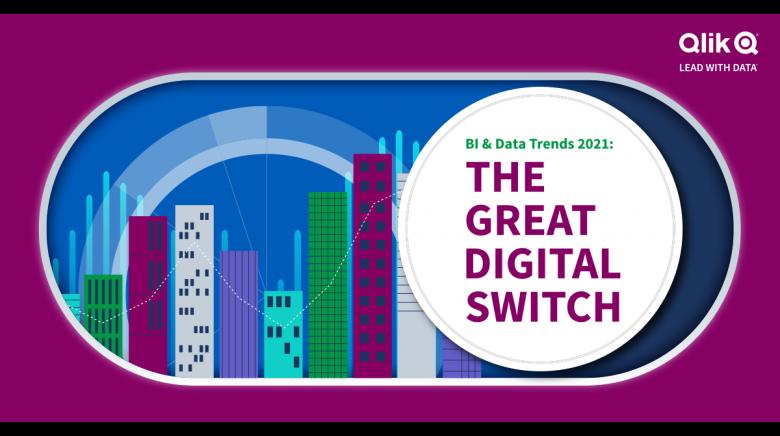
There’s no doubt that 2020 has been a turbulent year for all of us and seen significant change in the way businesses operate. In light of this, it’s necessary for businesses to have the ability to pre-empt and adapt quickly in such disruption, and data is at the heart of this. Here we explore the top 10 emerging business intelligence and data trends for 2021 according to Qlik.
1. SaaS is everyone’s new best friend
While bigger projects have been put on hold in the short term, the immediate switch to SaaS will be a trigger for the migration of databases and applications. Technologies that can access, move and harmonise data from multiple places will follow. Gartner predict that by 2022, public cloud services will be essential for 90% of data and analytics innovation.
2. Self-service has evolved to self sufficiency
In analytics, empowering users to access data more intuitively will enable the move from data self-service to data self-sufficiency, especially in light of the increase of employees working remotely.
3. Shared data, visualisations & storytelling are consumed by the masses
There has been a step change in the consumption of visualisations and data storytelling. This development is moving millions toward data literacy. By 2022, IDC believe a third of G2000 companies will have formal data literacy improvement programs in place to counter misinformation.
4. Up-to-date & business-ready data are more important than ever
Since the pandemic arrived, we’ve seen a surge in the need for real-time and accurate data. Alerts, data refreshes and forecasts will need to occur more often, with the most up-to-date variables. And as the velocity of data increases, the speed of business must follow.
5. Advanced analytics needs to look different
Predictive models typically don’t work well when a critical input datapoint has never occurred in the past. Algorithms need good backward-looking data – sometimes lots of it – to build a comprehensive data model of the future. And we need to up-level analytic approaches to include a focus in on outliers.
6. Capture & synthesize alternative data
It’s becoming increasingly important to use data from external sources, including from outside industries. From that, you can get derivative data, which comes from combinations, associations and syntheses with data from systems of record. This trend isn’t new but is gaining traction, thanks to cheaper processing and more mature AI.
7. Business process reengineering takes centre stage
One of the most common outcomes of successful enterprise data and analytics projects is improved operational efficiency. Today, we can not only model business processes but also mine, automate and optimise them via technologies like robotic process automation, alerting and embedded analytics. As leaders look to reengineer the way things get done, the efficiency metric will only grow in importance and priority.
8. The compass for competition, surveillance & security has changed
Governments are intruding further into our privacy, which we have at least temporarily accepted. Additionally, we’re seeing collaboration between normally fierce competitors. One potential upside of the pandemic: Large-scale co-opetition may lead to new innovation. But how and where will data be used and stored?
9.Collaboration has to coalesce earlier in the chain
The convergence of data management and analytics has created opportunities for integration points between the components of the data pipeline, combining synthesis with analysis and enabling active metadata, business logic and catalogs to act as connective tissue. This will push collaboration, innovation and discussions to the data itself. By 2023 augmented data management will reduce the reliance on IT specialists for repetitive and low-impact data management tasks, freeing up 20% of their productive time for collaboration, training & high-value data management tasks according to Gartner.
10. The Great Digital Switch may force a generational shift in analytics
Drastically changed circumstances have disrupted expectations, which may trigger a generational shift in BI. The expectations for next-generation technology can be summed up in a single phrase: the movement from passive to active. In an uncertain world, companies need to become as pre-active and prepared as they can.
To read more download Qlik’s BI & Data Trends 2021 The Great Digital Switch ebook.


